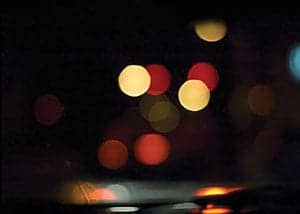A Nexus Narcolepsy Registry study links specific factors to diagnosis delays.
In 2015, to better understand narcolepsy, patient advocacy organizations, researchers, and others created the Nexus Narcolepsy Registry, an online database that tracks a large number of people with the rare neurological sleep disorder narcolepsy over time.
Anyone who is a narcolepsy patient can share his or her data anonymously through questionnaires and surveys so researchers can glean more insight on how the condition affects patients. This can range from information on which symptoms the participants experience to how long it takes for them to receive a correct diagnosis.
In 2018, researchers published a study titled, “Predictors of Time to Narcolepsy Diagnosis in Participants With Adult Onset of Symptoms: Results From the Nexus Narcolepsy Registry,” that looked to determine the factors that are associated with delays in seeking evaluation and diagnosis among adult patients with narcolepsy.
“We found that there was a significant delay in diagnosis for patients who have experienced narcolepsy symptoms since they were children,” says Michael Thorpy, MD, director of the Sleep-Wake Disorders Center at the Montefiore Medical Center.
Nine hundred eighty-five people participated in the study, and on average it took patients who experienced an onset of symptoms as a child around 10.7 years to get the first consultation and another 4.5 years from the first consultation to a correct diagnosis. On the other hand, adults had a significantly shorter time (around 4.6 years) to first consultation and 2.2 years on average to reach a diagnosis.
Another notable finding was that those who told their providers on the first consultation that they had vivid dreams as a symptom, in general, had a shorter time (about 1.5 years) from the first consultation to diagnosis. Those who did not report vivid dreams as a symptom, on the other hand, had around 2.7 years of delay to diagnosis.
“Because vivid and frequent dreams is a symptom that’s more unusual than excessive daytime sleepiness, that seemed to have tipped off the clinicians to look further to help get the patient to the correct diagnosis,” says Thorpy, who also works as the professor of clinical neurology at the Albert Einstein College of Medicine.
The specialty of the provider was also a factor that influenced delays in diagnosis. Patients who had the first consultation with a pulmonologist were associated with a longer time to diagnosis (3,4 years on average) compared to other providers including generalists and specialists like neurologists (2.1 years).
Excessive daytime sleepiness is usually associated with more prevalent conditions like sleep apnea. Plus if the patient is overweight, they are often seen more like candidates for sleep apnea and are overlooked for narcolepsy. Other providers like neurologists and sleep specialists, on the other hand, tend to be more aware of the possibility of narcolepsy in patients.
“In this particular dataset from the registry, the most important takeaway is that pediatricians need to be more aware that children suffering from sleep problems may have narcolepsy and that it should not be overlooked completely as a possibility,” says Thorpy.
Because untreated narcolepsy has a significant negative impact on the quality of life of patients, those who have symptoms that aren’t getting addressed fully should also feel empowered to get a second opinion when in doubt, Thorpy adds.
Yoona Ha is a freelance writer and healthcare public relations professional.





